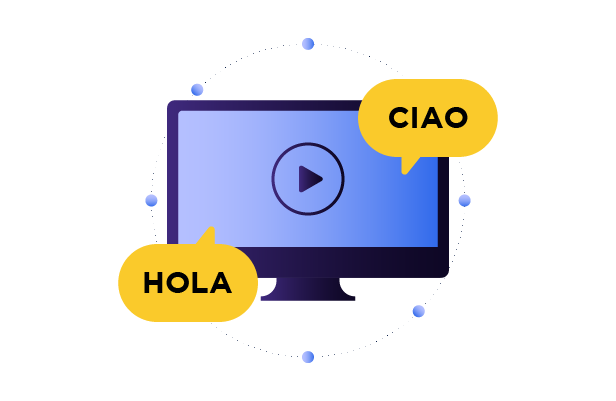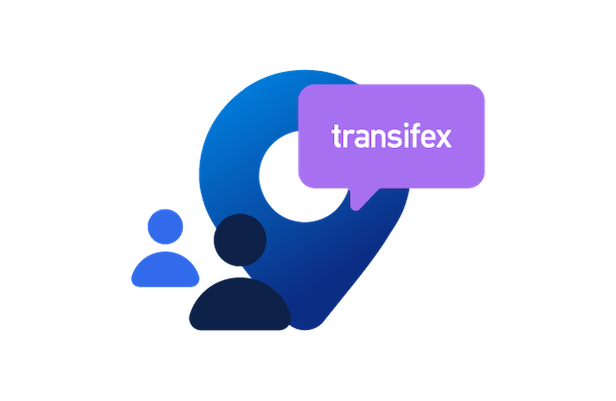
Expand Your Reach With a Video Localization Strategy
Are you looking to target a new market to grow your brand with video content? If so, then you will need to create a video localization strategy. Video localization is adapting your video content to a specific market or language.
This can be a complex and costly process, but it is essential if you want to reach new audiences.
To ensure that your video content marketing is as effective as possible, you must have a strong localization strategy. This means you need to do more than just translate your videos into different languages, such as considering the cultural differences that affect how your videos are distributed and received.
By learning about the different aspects of video localization, you can ensure that your videos are optimized for each market you are targeting.
This blog post will cover everything you need to know about video localization, including why it is so essential, the distinct steps involved, and some tips for getting started.
We will cover everything from finding the right video localization partner to preparing your videos for translation.
By the end, you will have a solid understanding of how to get started with video localization and be well on your way to success.
Why Should You Care About Video Localization?
Businesses that have not adopted the video localization strategy are missing a lot of traffic. As the world becomes more digitized, the importance of video localization will only grow.
With over 90% of internet users watching online videos, video is one of the most powerful tools for marketing your business.
People only crave video content, be it videos of sponsorship, brand videos, how-to videos, video ads, or video promos of business activities. However, if your video content is not properly localized, you risk losing out on much of your potential audience.
Video localization is translating and adapting your video content for different cultures and markets. This is important because different cultures have different customs, values, and traditions, and what may be acceptable in one culture may not be admissible in another.
Through video content localization, you can ensure that it is culturally appropriate for your target audience, which will help you better connect with them.
Tips For Successful Video Localization
For video content localization, there are a few key things to keep in mind to ensure a successful outcome. Here are a few tips to help you get started:
Do Your Research
Before starting the localization process, it is essential to do your research and understand the target audience you will reach with your localized videos. It includes understanding the target audience’s culture, customs, and language.
By understanding your target audience, you will better adapt your videos to their needs and ensure that your localization efforts are successful.
Hire a Localization Partner
The first step in any translation project is finding the right translation partner. This is especially important with video localization, as the quality of the translation can make or break your video.
Do your research and take your time to find a translation partner that you can trust to produce high-quality work.
Localizing videos can be complex, so it is essential to employ a professional localization company with experience in localizing videos. They will help you adapt your videos to the target audience and culture while ensuring that the videos maintain the same quality and message as the original version.
Set the Preface in Creating the Localized Videos
Once you have found a partner, it is time to prepare your videos for translation. The first thing you will need to do is create a script.
The script does not have to be fancy, just a written version of the dialogue and other audio in your video. The script will be used as a reference for the translators, so make sure it is clear and concise.
Once you have your script, it is time to think about the visuals in your video. Prepare a list of all the text in your video since it will need to be translated since it will appear on the screen.
You will also need to consider any on-screen graphics, such as logos or product shots. If possible, provide your localization partner with high-resolution versions of these assets.
Now that you have your script and visuals sorted, it is time to think about the audio in your video. If your video has music or sound effects, you will need to provide your localization partner with the files.
Sometimes, you may also need to provide the source material for the audio, such as the original music tracks.
Use Subtitles and Dubbing
Subtitles and dubbing are two popular options for localizing videos. Subtitles are a great option if you want to keep the original audio but want to provide text for viewers who do not speak the same language.
Using accurate subtitles or closed captioning will ensure that your video is accessible to deaf viewers who have trouble hearing.
Dubbing is another excellent option that allows you to replace the original audio with audio in the target language. A targeted language is an excellent option if you want to ensure that your video is fully accessible to your target audience.
Use Voice-over Artists
First, use professional voice-over artists who speak the native language you are targeting. Native speakers will help to ensure that your video sounds natural and not like it was translated directly from another language.
Test Your Videos
Once you have localized your videos, testing them to ensure they are effective is essential. You can do this by showing the videos to people in your target audience and getting their feedback.
Testing will help you determine if your videos succeeded in reaching and engaging your target audience.
Be Patient
Brand localization videos can be a complex and time-consuming process, so it is essential to be patient.
It may take some time to get everything right, but it will be worth it in the end when you have a successful and engaging video that reaches your target audience.
The Final Note
Video creation is an easy process but adhering to various strategies is difficult. The best part is that you do not have to immediately adopt all the video strategies. One video strategy at a time will help you gain traffic and reach your target audience with video marketing.
Related posts
10 Most Popular Languages for Localization
What is Localization? All you Need to Know








